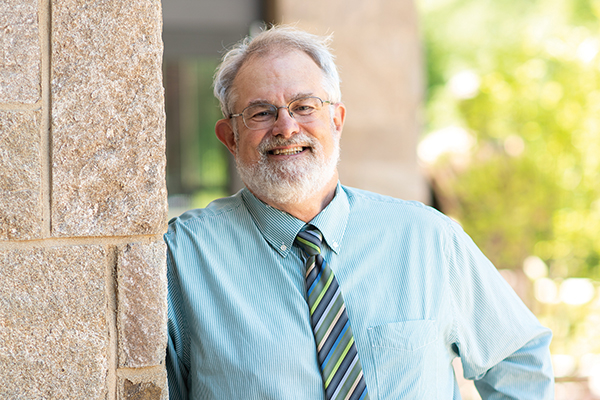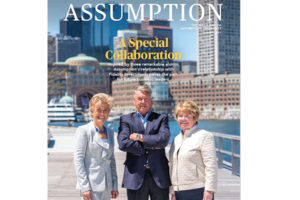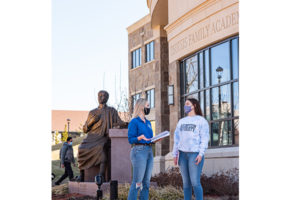
One winter’s evening years ago, I watched scores of visitors, adults, and children from many countries and continents gather around Associate Professor Esteban Loustaunau in D’Alzon Library. Assumption had brought our guests over from Training Resources of America (TRA), but of course they had traveled far greater distances. It was only fitting they attend the opening of an exhibit of immigrant photography.
The featured photographers? Themselves.
The previous year, Prof. Loustaunau had sent his Contemporary Spanish-American Drama students to tutor at TRA. His course culminated in a project in which the immigrants were given disposable cameras, then asked to take photos that symbolized what Worcester – or America – meant to them. With the assistance of Prof. Loustaunau’s class, the TRA students practiced their English by writing and talking about their photos.
Prof. Loustaunau was so impressed, he took the project a step further, arranging the exhibit that surrounded us in the library.
“This is for you,” he told our guests as he gestured around himself. “This is your space. This is your home.”
The newly exhibited photographers showed their families and friends their work on the walls of a public institution, congratulating one another, hugging, and laughing. But what caught my eye most were interactions between the immigrant photographers and Prof. Loustaunau’s students, a reminder that the generosity flowed in both directions. The truth was that TRA – like more than 80 other partners who work with our Community Service Learning (CSL) courses – gave as much to our students as they gave to it. This is the spirit of partnership that the best CSL courses achieve: We focus on doing with rather than just doing for, approaching partners on level ground, the supposed server as grateful as the served.
Examples of such mutual benefits abound in Assumption’s Community Service Learning Program. Professor Jennifer Niece’s accounting students have helped lower-income people receive almost $900,000 in tax refunds, but her students get practical experience with real clients. Professor Angela Kaufman-Parks’ criminology students aided residents at the Hector Reyes House in identifying possible employers, but in return, they gained deeper insight into the challenges faced by those seeking to re-enter life beyond the criminal justice system. Graphic design students under Professors Kate Egnaczak and Lynn Simmons have provided a wide variety of products that help nonprofits promote themselves more effectively, but they learned how to identify the needs of real clients and enjoyed seeing much of their work used. (One day I looked out my car window to see a student-designed logo covering the side of a UGROW truck; it was the happiest I’ve ever been about being stuck in traffic.)
For each of these examples, I could name many, many more. Just since 2007–08, in an average year, 377 CSL students have contributed 5,695 hours of service. Those partnerships – much like Campus Ministry’s SEND trips and the Reach Out Center – embody the values of Assumption at its best. Not only does CSL honor the Catholic call to serve something larger than ourselves, but it also underscores the institution’s commitment to innovative teaching that helps students apply classroom learning to the world beyond the campus. The program created by Professors Susan Perschbacher and Ann Murphy – which I’m now fortunate enough to direct – has seen students build their experiences into vocations and avocations.
Plus, everyone involved experiences memorable moments, small and large, private and public, like the ones unfolding around me that night in D’Alzon Library. Certainly, the hard-working immigrant photographers will remember. As one TRA staff member told me, “This will go down in their history.”


